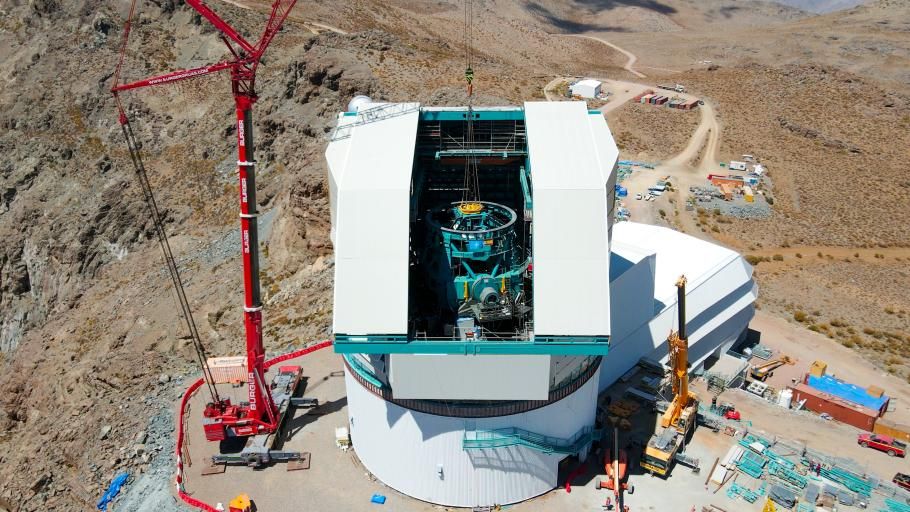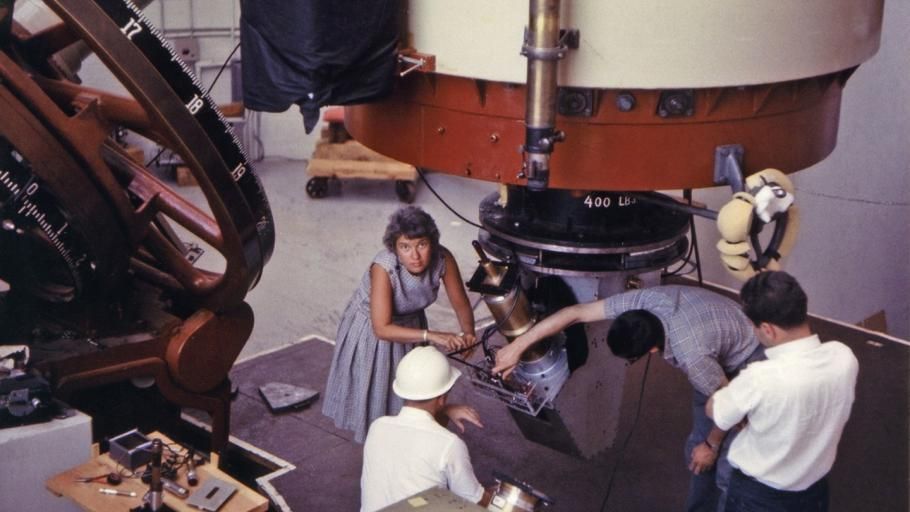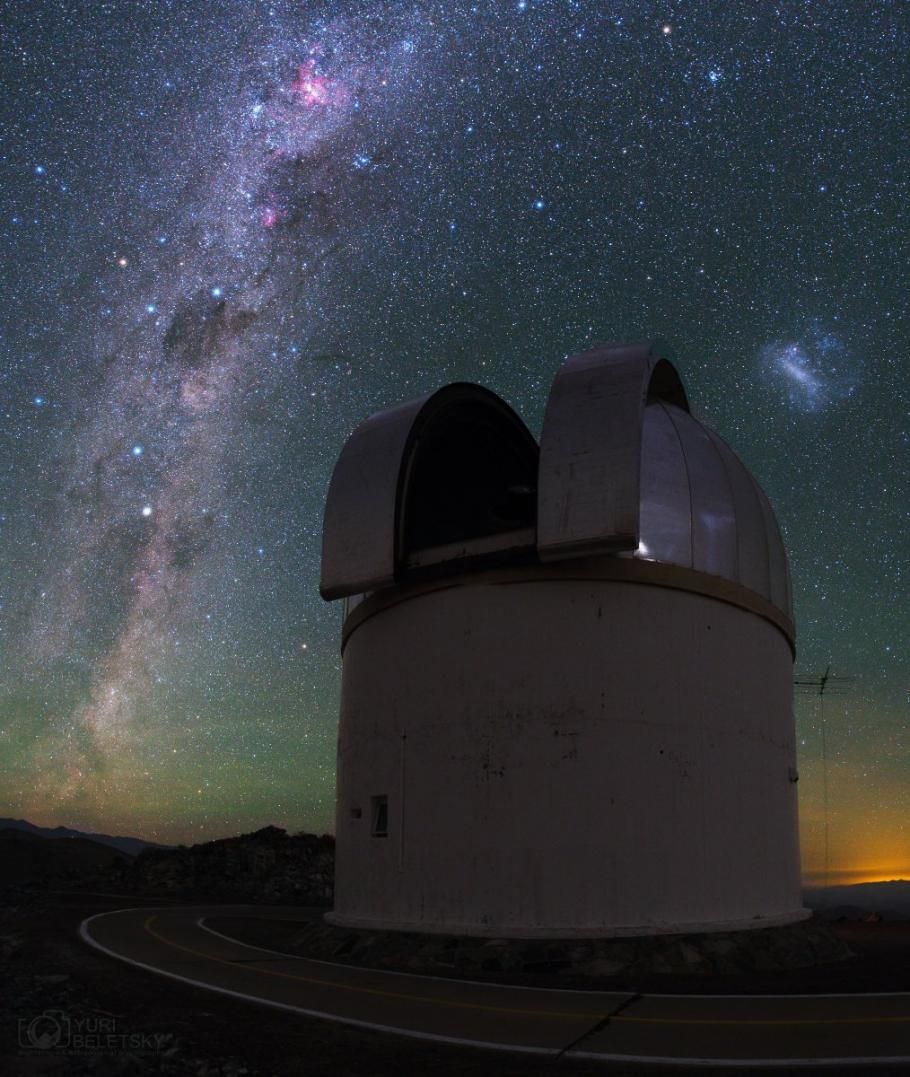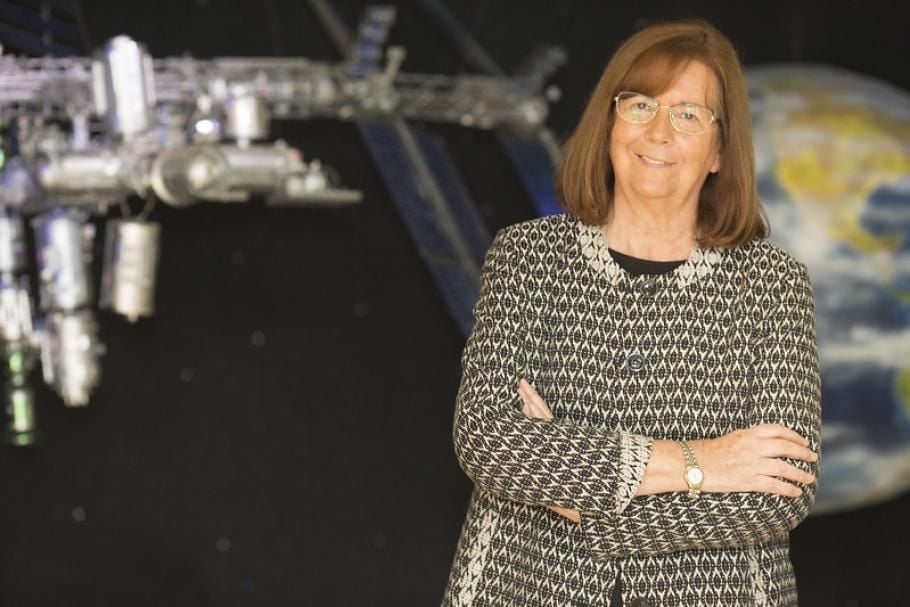The Vera C. Rubin Observatory and Women of Chilean Astronomy
The Vara C. Rubin Observatory is perched on Chile’s Cerro Pachon in the foothills of the Andes Mountains and stands as a doorway to exploring the women of Chilean astronomy.
:focal(173x114:174x115)/https://tf-cmsv2-smithsonianmag-media.s3.amazonaws.com/blogging/featured/Vera_Rubin.jpeg)
In March 2020, the Vera C. Rubin Observatory sat partially erected, perched on Chile’s Cerro Pachón in the foothills of the Andes Mountains. The Observatory had halted construction of the 8.4-meter telescope and its associated buildings due to the coronavirus pandemic. By October 2020, with safety precautions in place, construction teams began to slowly return to the mountain. Earlier this month, just one year after its unexpected closure, the Rubin Observatory reached a major milestone when crew used a crane to lower the top end of the telescope, weighing approximately 28 tons and measuring 10 meters in diameter, through the observatory’s open dome and into its place on the telescope. This was one of the last remaining heavy pieces to be added to the telescope as the project nears completion and looks forward to beginning regular observations in 2022.

Once in operation, the Rubin Observatory will survey the sky above it, capturing images every few nights to create a catalog of data and a map of the visible universe. Astronomers will use this accumulation of roughly 20 terabytes of data each night, enough to hold the equivalent of four million of your favorite songs, to push our scientific understanding of the structure and evolution of the universe.
Initially called the Large Synoptic Survey Telescope, the Vera C. Rubin Observatory was renamed to honor a pioneer in astronomy, particularly in the field of dark matter, one of the many mysteries the new observatory is expected to help probe. Beginning in the 1960s, Dr. Vera Rubin used a new instrument designed by Kent Ford to study the motion of galaxies. Rubin discovered that the stars in the galaxies she observed orbited faster than expected. One explanation for this discrepancy was that there was more mass in the galaxy than could be seen in the stars alone. Rubin’s observations helped provide the best observational evidence that the universe is not only composed of ordinary matter, but is actually dominated by dark matter.

In 2019, two U.S. House of Representative members, Eddie Bernice Johnson and Jennifer González-Colón, introduced the congressional bill to rename the observatory, the text of which noted Rubin’s pioneering astronomical work, but also the barriers she faced because of her gender. Princeton University, Rubin’s preferred choice for graduate work, did not allow women to apply to its programs and the astronomical community largely ignored Rubin’s research early in her career. Eventually she succeeded in securing a position at the Carnegie Institution of Washington and became the first woman to officially observe at the Palomar Observatory, which was home to the world’s largest telescope. Before her death in 2016, Rubin served as a mentor to other women astronomers and fought for better gender parity in astronomy.
Rubin observed the universe with some of the largest telescopes available during the late twentieth century, including those in Chile, at the newly established Cerro Tololo Inter-American Observatory and the Las Campanas Observatory. When Rubin began her astronomical career, Chile held a small fraction of the world’s telescopes. However, largely due to the nearly perfect dry and clear conditions, particularly in the Atacama Desert in Chile’s northern region, today Chile contains the vast majority, around 70%, of the world’s large ground-based telescopes.

Most Chilean observatories constructed in the last 60 years are operated by North American and European nations. For their access to Chile’s pristine skies, these international collaborators agreed to reserve 10% of observing time for Chilean astronomers, a percentage that many argue is not adequate. The number of Chilean universities offering PhD degrees in astronomy has increased in the last decade and the number of professional astronomers working in Chile has tripled in that decade alone. At the Vera C. Rubin Observatory, all of the data will be made available to both Chilean and U.S astronomers which should aid the growing number of astronomers in Chile. However, in Chile, women astronomers still only account for 15% of the country’s astronomers, which is about half their representation worldwide. Placing Rubin’s name on a new observatory and providing greater access to its data is a recognition of her incredible accomplishments and tireless efforts but it is also a reminder of the continued marginalization of women in astronomy and the further inequity across race and nationality.

While the number of women astronomers in Chile remains low, women have succeeded in contributing to the extension of our knowledge of the universe. Dr. María Teresa Ruiz broke through her own barriers as she worked to become a trailblazer for women in Chilean astronomy. Born in Santiago, Ruiz was the first woman to earn a degree in the newly formed astronomy program at the University of Chile. When she graduated there were no astronomy PhD granting programs in Chile so she traveled to the United States where she attended Princeton University, the same institution where two decades earlier, Rubin had not been permitted to apply. In 1975, Ruiz became the first woman to earn a PhD in astrophysics at Princeton. Ruiz eventually returned to Chile and helped to rebuild and foster the university system. In 1997, she discovered one of the first free floating brown dwarfs using the European Southern Observatory’s La Silla observatory. Brown dwarfs are star-like objects that are too small to fuse hydrogen but too large to be planets. Their discovery and subsequent study refuted the hypothesis that brown dwarfs may account for a significant amount of the dark matter in the universe. For her long and accomplished career in astronomy, Ruiz was awarded Chile’s National Prize for Exact Sciences and remains a leader for science in Chile.
Ruiz paved the way for younger scientists to follow in her footsteps. Dr. Bárbara Rojas-Ayala began her astronomical studies under Ruiz and continues to research dwarf stars at the University of Tarapacá. Dr. Maritza Soto has already impressed with the discovery of three planets, the first of which she discovered in 2011 while a graduate student at the University of Chile. Soto continues her research while hoping to normalize careers in astronomy, particularly for women. In 2019, Soto hoped to import that “astronomy is not alien stuff that only two people in the world do; it’s really a career path. It’s something you can do, that anyone can do, if you work a lot for it. It’s not impossible, you don’t have to be a genius,” she says. “You can just be a normal person.”
By the time the Vera Rubin Observatory begins operations in 2022, followed by other large telescopes built along the Chilean Andes, we can hope that the number of women astronomers using those facilities will continue to rise. To accomplish this, major steps still need to be taken and enforced to make the astronomy community more inviting and more supportive of women, particularly in the places that host the world’s telescopes.
